21st Century Tango
Kate Weare and Esteban Moreno Create New Forms for DANCEworks
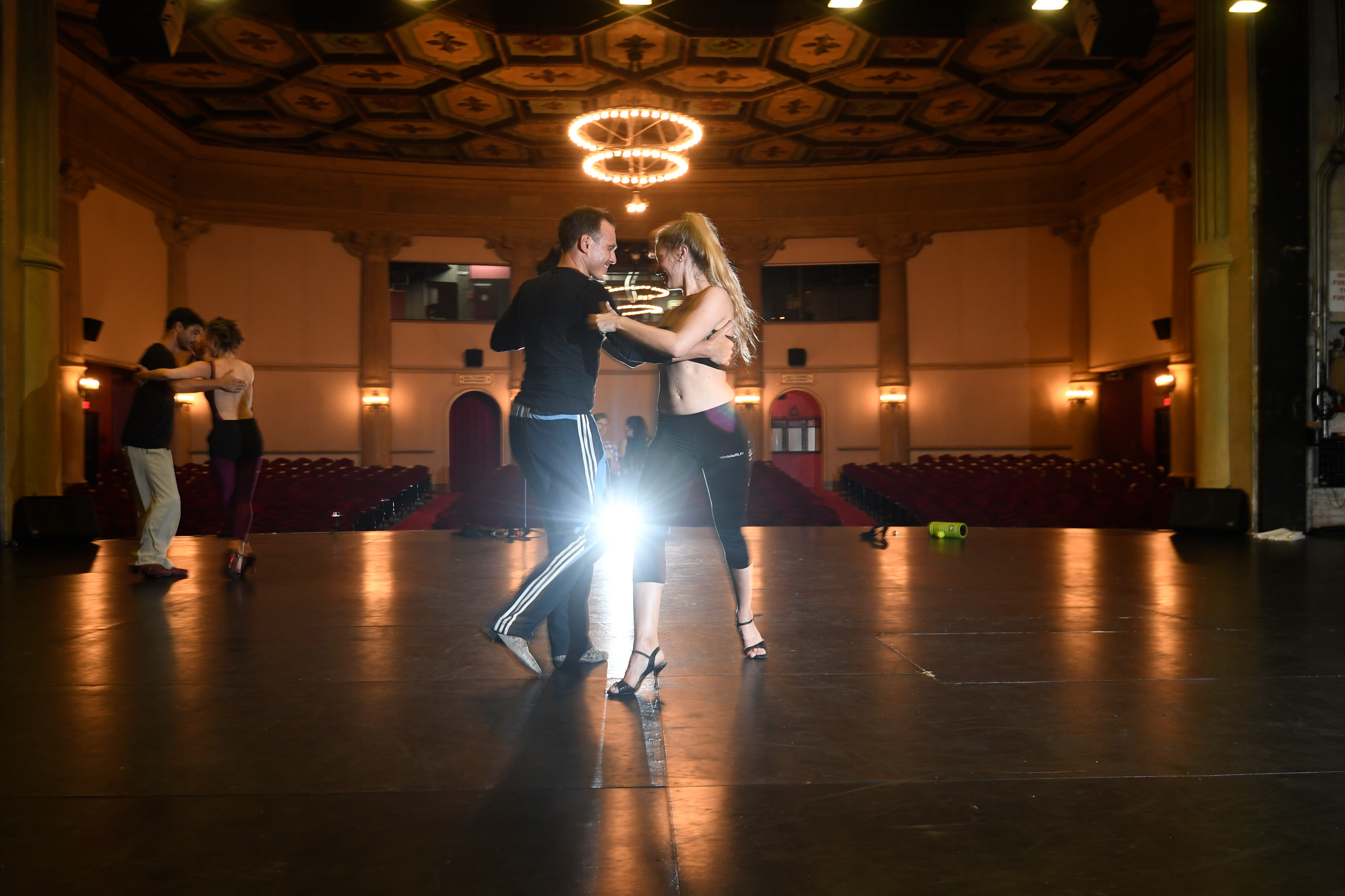
Beyond being a lifelong student and aficionado of all forms of dance, Dianne Vapnek is a great listener. In response to what she heard during many hours of intense conversation with a galaxy of innovative contemporary choreographers, Vapnek founded DANCEworks, the revolutionary annual residency program at the Lobero Theatre that gives select artists and their companies a full month to rehearse in the space and on the stage where they will eventually perform. Now more than a decade into this grand experiment, the logic of DANCEworks’ approach has only become more apparent with each passing year.
Although every season is different, previous successes can lead to bolder, more innovative concepts. This summer, for the first time, two choreographers have come together from different traditions with the intention of making something unprecedented. Kate Weare, leader of New York–based Kate Weare Company, is an award-winning and experienced practitioner of contemporary dance. Esteban Moreno, artistic director of Union Tanguera in Lyon, France, represents both the “tango de salon” tradition of Argentina and the ambitious expansion of tango as dance theater that has swept the world since the great tango revival of the 1980s.
Accompanied by Thryn Saxon and Nicole Diaz, two dancers from Weare’s group, and three performers from Union Tanguera — Daniel Escobar, Nayhara Zeugtrager, and Gabrielle Weisbuch — Moreno and Weare have been hard at work for the last month crafting what is essentially a new form of dance, a hybrid expression that seeks to harness the extended vocabulary of contemporary dance to the heart and soul of the tango. On Friday, September 1, and Saturday, September 2, audiences at the Lobero will witness the world premiere of Sin Salida/In Love I Broke Beyond, their new piece based on this experimental transformation of the tango.
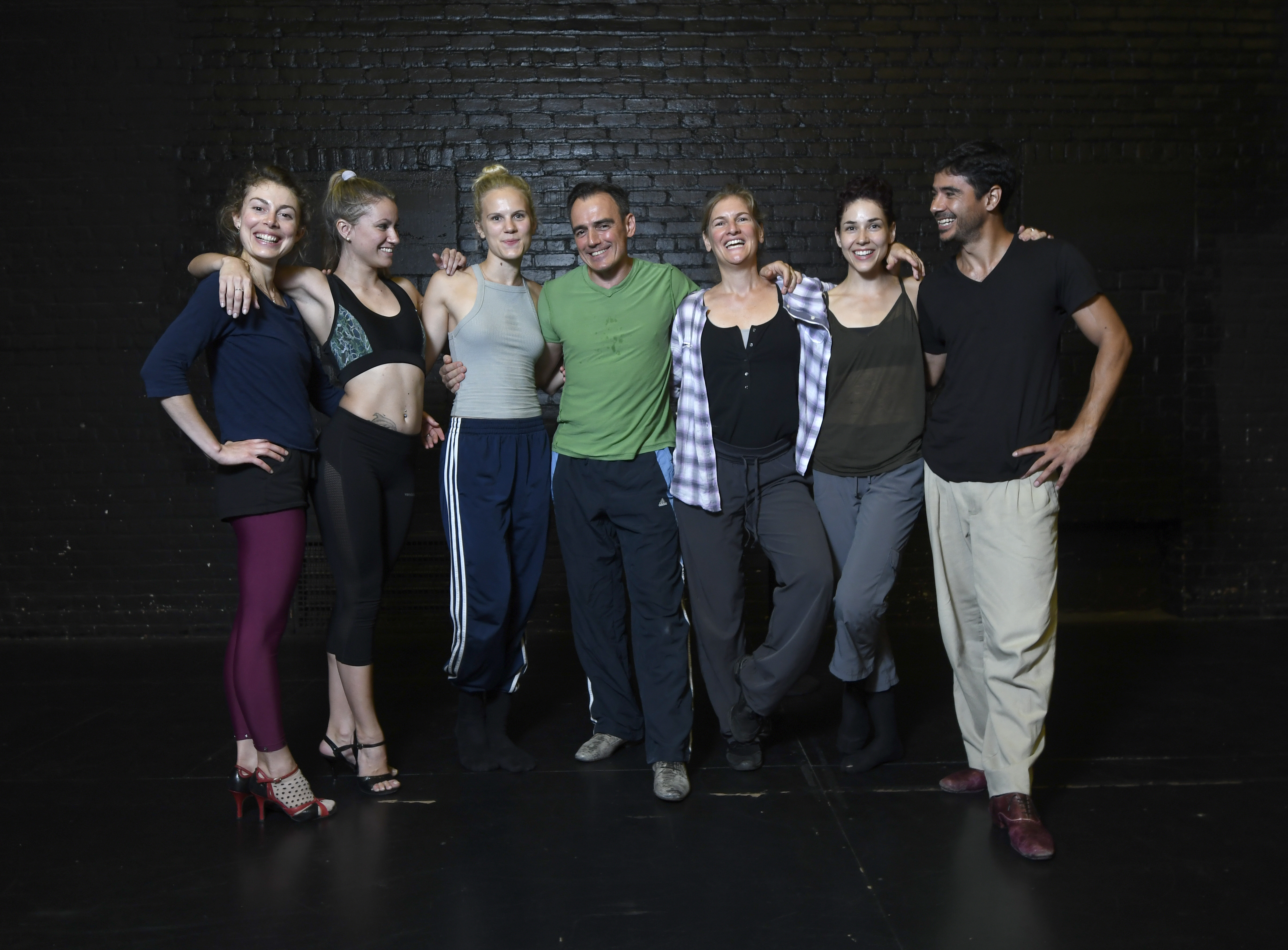
It’s Alive!
One of the greatest satisfactions of DANCEworks comes from spending time in the empty theater, observing the dancers and choreographers as they gradually piece together the sections that they will perform on opening night. Weare calls this assembly process “Frankenstein-ing.” She takes bits and pieces of movement and puts them next to each other until creative lightning strikes. When the monster sits up, everyone feels it. The mind’s inner mad scientist responds with a resounding mental cry of “It’s alive!”
That’s happening a lot right now in the Lobero, as these talented dancers are in an unusual and fortunate situation. Ordinarily, there’s a single choreographer who may or may not participate in the dance, and he or she “sets” the work on the dancers. In this case, since Moreno is a fantastic dancer and an authority on the tango, he’s constantly in the mix onstage. Weare, who is also a great performer but is taking an entirely choreographic role in this work, watches, comments, combines, and edits the evolving sections and movements. There have been some spectacular collaborations through DANCEworks in the past, but probably not anything that quite compares to this in terms of sheer combined experience, in and outside of the dance.

In one particularly striking sequence, Moreno and Weisbuch form the core of a six-person cluster that prowls the stage to a complex piano tango by composer Gustavo Beytelmann. Each of the other four dancers observes and echoes the central pair, sometimes miming aspects of their movement at a distance, and at other times cutting across them in contrasting steps of their own. When the four external dancers move closer, a set of choreographed falls begins, with both Moreno and Weisbuch by turns lying out of their mutual dancers’ embrace to drop into the waiting arms of one or more members of the surrounding group. It’s a move borrowed from trust games that the dancers played together at the start of the residency, and as the intensity of the inner tango increases, so does the expressiveness of each new catch and return. It’s as though the intimate exchange of weight within the dancing couple has been amplified by engaging with this roving human container. As the dancers add more complex lifts and pivots to the initial pattern, new relationships emerge and reveal their own emotional content. Watching it unfold, I am reminded of the interpretive principle that says that in a dream, there can be several people, yet they can all be figures for the dreamer.
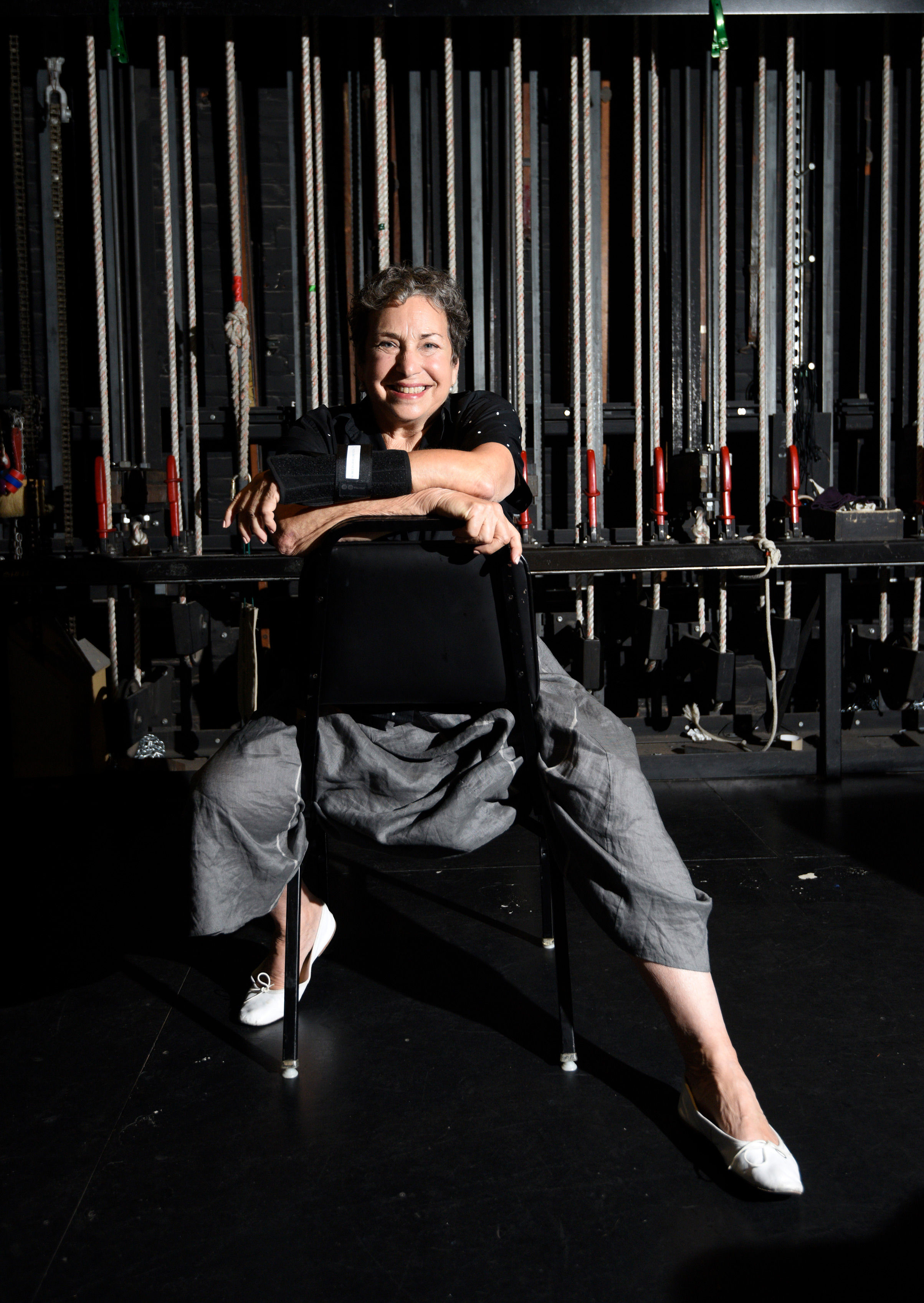
The dancers punctuate the hard work of these rehearsals with bouts of laughter and conversations that veer from English to French and Spanish and then back to English again. Housed together for the duration of the residency, they are living this cross-cultural experiment literally every minute of the day, and they are all keenly aware of the challenge they face. In just four weeks, they aim to bridge the gap between two radically different traditions, and the complex ensemble section they have just been working on illustrates perfectly the contrasting structures of feeling that inform these separate worlds. In her mission statement for the project, Weare describes the dichotomy as stemming from fundamentally different ways of constructing a self, writing that tango “suggests the extent to which we must rely on others to perceive ourselves and our shifting desires, exploring individual freedom only through continuous connection between partners,” and then going on to remind us that in tango, a “solo” conventionally means a dance involving two people. In modern and contemporary dance, Weare sees the isolated individual dancer as “the locus of meaning and the generator of content.”
A Tango with No Exit
Thinking in these terms about the moves from the trust game that Weare has incorporated into the ensemble section, the falls and catches in and out of the abrazo, or core embrace, take on metaphysical significance. Existential philosophy, and in particular the work of Jean-Paul Sartre, underpins much of what these artists are doing. The Spanish half of the title of the work, “Sin Salida” plays on the multiple meanings of “salida.” On one hand, “Sin Salida” is a literal translation of the title of Sartre’s famous play Huis clos, known in English as No Exit. That’s the one in which Sartre wrote “L’enfer, c’est les autres,” most commonly translated as “Hell is other people.” On the other, a “salida” is a dance move, the side step that allows a new couple to enter the counterclockwise flow of the tango dance floor. An entrance that’s called an exit — how much more existential can you get?
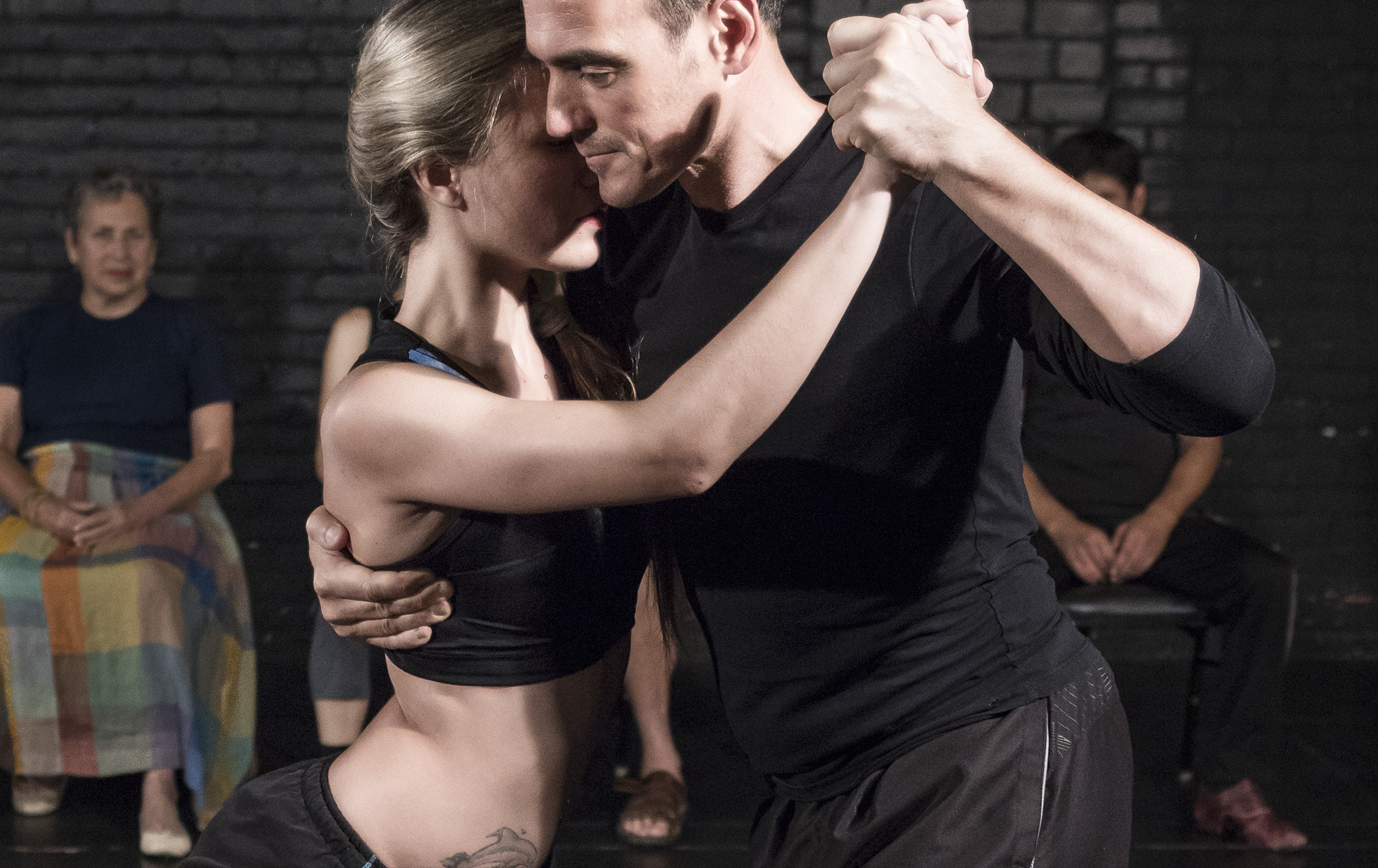
I am not exaggerating the intellectual aspect of this project. In fact, at one of the Friday Club rehearsals, the audience observed a tango featuring two women that was performed to a soundtrack of Sartre reading from his own work, unaccompanied by music. Moreno explained that, in addition to adding a layer of meaning to the content of the piece, he chose the spoken-word recording because the rhythms of Sartre’s declamatory style appealed to him. He was hearing French existentialism as though it were music, and responding to it in the form of tango.
The cultural context out of which the modern tango has emerged is deep and complex. In his 2005 book Tango: The Art History of Lovev, Yale professor Robert Farris Thompson traces the Argentine form to the Cuban habanera brought by black sailors to Buenos Aires, and from there all the way to Africa. Thanks in part to its origins among the oppressed, tango has always expressed rebellion and dissent. “Milonga,” the term commonly used for the social dance setting of tango, means “argument,” and the competitive spirit that drives improvisation and innovation stems from this atmosphere in which dancers agree to disagree. The residue of tango’s social origins in the milonga can be felt in its stylized struts and sudden stops, which reflect the creative tension between the partners and among the couples on the floor. In the world according to tango, disparate cultural influences circulate unceasingly across oceans and continents, carried this way and that by the music, only to be revealed through the dancing bodies of living people.
Building Blocks
For Weare, the purpose of this current experiment in cross-cultural collaboration is to understand and reimagine the meaning of the abrazo that is the basis of tango. Like Béla Bartók, the favorite European composer of tango genius Astor Piazzolla, Weare is not interested in simply quoting phrases from a folk tradition for the sake of adding exotic flavor to a contemporary work. Instead she seeks to discover fundamental elements — modes, rhythmic patterns, meters, and manners of ornamentation — and then to build them up independently into something new. Like Shannon Gillen, last year’s DANCEworks resident choreographer, Weare is a visionary and a risk-taker, willing to gamble and push the limits of her dancers and of the movement vocabularies they possess. The thick layer of shredded rubber that covered the Lobero stage last season may be gone, but the high-flying spirit of no limits lives on.
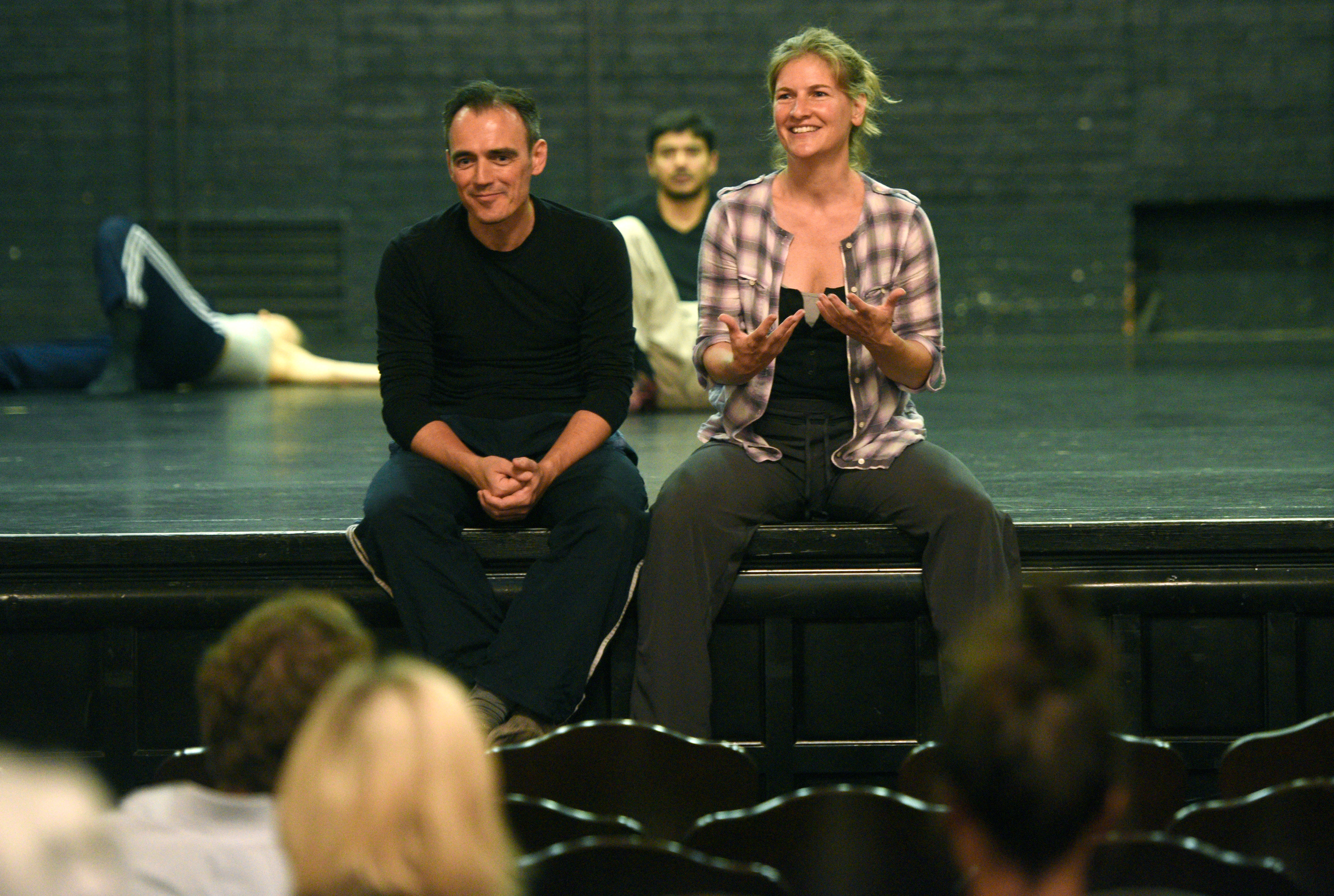
What makes tango such a fertile resource for this type of experimentation? In part, it’s the antinomy tango represents in relation to the modern dancer’s conception of what dance is. In tango, it’s all about the partnership, as in, “one needs the other to perceive oneself.” In modern dance, the individual is the source of meaning, isolated and expressive in that isolation. But it’s also the fact that tango was the first couples dance to sweep the ballrooms of the world that encouraged improvisation. To this day, there is no such thing as a “basic” tango step. All the moves must be seen as essential parts of its story. Weare talks about the adventure these dancers from different worlds are on as “open-hearted work”; she sees the task of merging radically different skill sets as offering both parties the opportunity to approach dance with a beginner’s mind.
Tango scholar Robert Farris Thompson has spent a lifetime absorbing and interpreting the ways in which dance reveals structures of feeling that permeate entire civilizations. He quotes one of his informants as claiming that tango constitutes “an autonomous creole theory for the reconciliation of cultures.” He sees the many traditions of tango, both in Argentina and Uruguay and elsewhere, as allowing tangueros to honor their ritual obligations. A milonga may be an argument, but it is an argument that resolves through “generosity, shared values, and a celebratory spirit.”
Tango and the Life of the Mind
Conversing with Weare and Moreno at a sidewalk table on Anacapa Street on a warm summer evening, you’d be forgiven for imagining that you’ve been transported to Café de Flore or Les Deux Magots. Moreno gets things started by saying that “we’re not using tango to talk about tango.” What is it then? “We’re using dance to look at how humans exist in space, and what they must do to discover themselves, to know who they are and what is their identity in the social realm.” Urged to elaborate, he adds that “we have some specific meanings that we want to communicate, but what we are building will have many different meanings depending on who sees it and on the experience they bring to it.” Weare then comes in, confirming the idea that “there are more meanings being created by this work than we could possibly be conscious of,” and that’s clearly the intention, to rise above a univocal and settled agreement about what’s happening onstage.
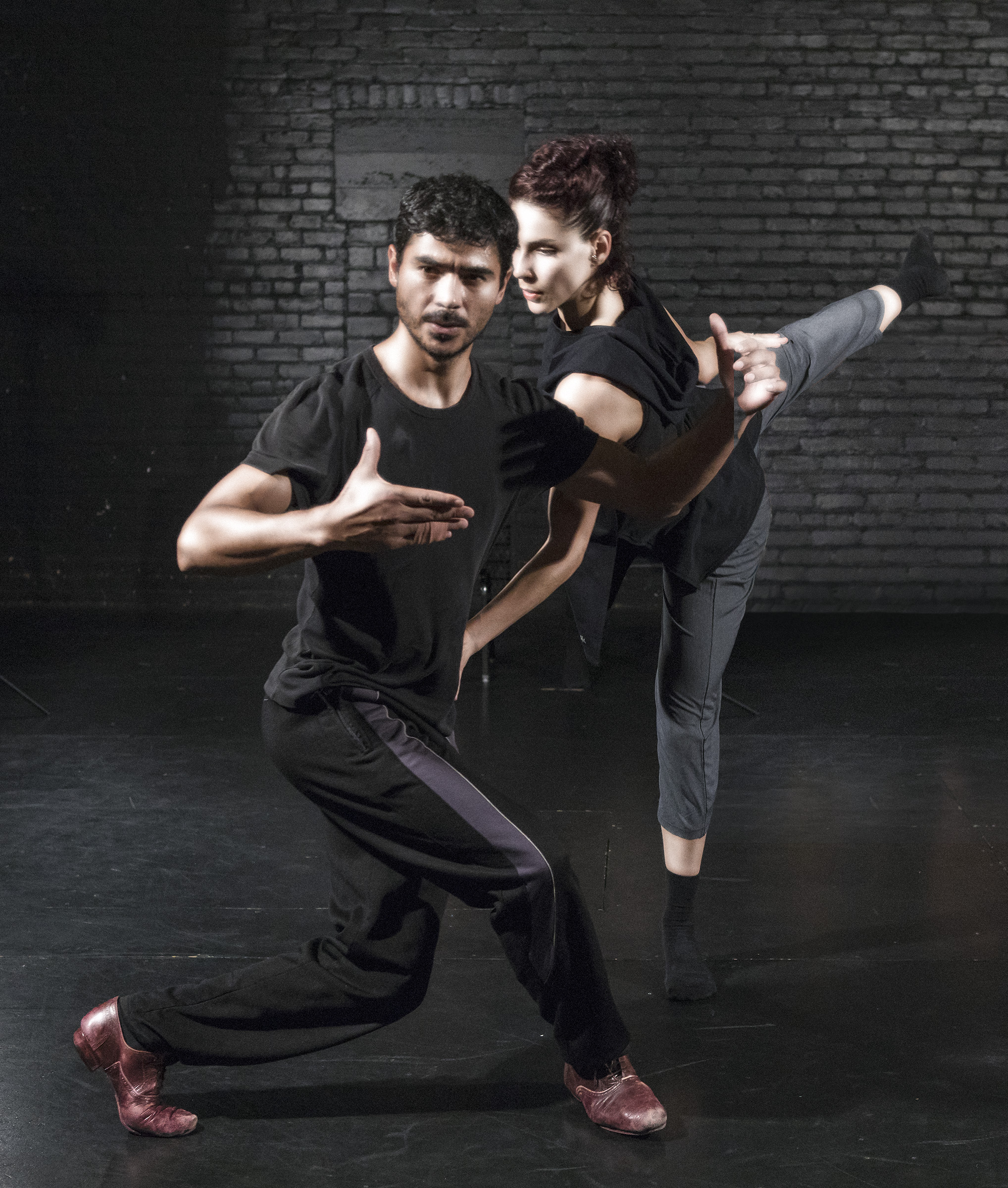
I bring the discussion back to the specific example of the four dancers surrounding and moving alongside the tango couple, taking turns catching and releasing them as they fall. Weare explains that this is not necessarily intended to amplify the familiar abrupt pivots of tango, but rather as a way of drawing the ensemble into the tension of the tango partnership. “The dancers are echoing what’s happening internally with the couple,” she says, but compared to the tango dancers, “their movements are more like those of everyday life because, among other things, they have to be ready to accept the weight of the dancers when they fall.” The trick for the external dancers is to keep watching and listening, to tune in to the inner tensions of the tango couple. “In the center they still have that sensitivity to one another that creates the tango,” says Weare, but the group following them is now activated in response; they have to pay close attention to that core partnership in order to perform their roles.
Moreno picks it up from another angle, saying, “Look, tango can be a cliché with the sudden changes of direction, and when the couple comes charging at you with the rose in the teeth. That’s what most people remember, but it’s really from the movies, not the milonga.” He asserts that those abrupt changes of direction are misperceived when they are understood as a total surprise. According to Moreno, “that’s not what’s happening on the inside. On the outside, maybe you have something that suddenly looks very different, but inside the dancing couple, there’s tension, and there is complete continuity. It’s like a cat’s cradle,” he says, comparing the dance to a simple game played with a looped piece of string. “You pull it in one direction and you get one shape, and then you pull it another way and you get something different, but it’s still the same tension that is creating that new image.” All of the figures in tango exist through the maintenance of this inner tension.
For Weare, the image of the falling dancer, the drama of catch and return that’s played out over and over again, has an almost limitless field of application. In response to my suggestion that it resembles the tragic pietà of religious iconography, she immediately shoots back that it could also be a statue that’s toppling. The reference to current public events at once braces and relaxes us, and the conversation turns again, this time to the little discoveries, what Weare refers to as the “sweet spots” when the dancers find something special in the material that they feel comes from within and thus belongs to them. Remembering a series of quick small steps that Zeugtrager added to a sequence using chairs as props, Weare sighs with pleasure. “She owns that,” she says. “It’s hers. You could see on her face how special it felt.”
To see for yourself, head to the Lobero on Friday, September 1, or Saturday, September 2, for what is sure to be an extraordinary night of dance, and, depending on what you bring to it, much more.



